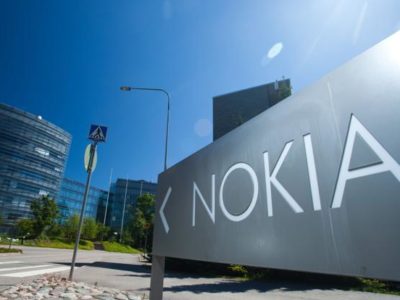The 2024 industry predictions are gaining grounds. How will tech-trends impact practices across various industries?
RELATED: AI, sustainability at forefront as industry turns attention to 2024
The 2024 forecasts by Steve Leeper of Datadobi and Don Boxley of DH2i collectively paint a comprehensive picture of an evolving landscape where data becomes a central component of intelligent business strategies and robust IT systems.
Surge in enhanced data insight and mobility
Steve Leeper, VP Product Marketing, Datadobi:
“As artificial intelligence (AI) continues to weave into the fabric of modern business, the year 2024 is likely to witness a surge in the demand for enhanced data insight and mobility. Companies will need to gain insight into their data to strategically feed AI and machine learning platforms, ensuring the most valuable and relevant information is utilized for analysis. This granular data insight will become a cornerstone for businesses as they navigate the complexities of AI integration.
“At the same time, the mobility of data will emerge as a critical factor, with the need to efficiently transfer large and numerous datasets to AI systems for in-depth analysis and model refinement. The era of AI adoption will not just be about possessing vast amounts of data but about unlocking its true value through meticulous selection and agile movement.
“The trajectory of storage technology is also poised for a significant shift as the year 2024 approaches, with declining flash prices driving a broad-scale transition towards all-flash object storage systems. This shift is expected to result in superior system performance, catering adeptly to the voracious data appetites and rapid access demands of AI-driven operations.
“As flash storage becomes more financially accessible, its integration into object storage infrastructures is likely to become the norm, offering the swift performance that traditional HDD-based object storage and scalability that NAS systems lack. This evolution will be particularly beneficial for handling the large datasets integral to AI workloads, which necessitate rapid throughput and scalability.
“Consequently, a data mobility wave may be seen, with datasets and workloads being transferred from outdated and sluggish storage architectures to cutting-edge all-flash object storage solutions. Such a move is anticipated not just for its speed but for its ability to meet the expanding data and performance requisites of burgeoning AI initiatives.
“Also importantly, in 2024, the landscape of data management will undergo a profound transformation as the relentless accumulation of data heightens the necessity for robust management solutions. According to Gartner’s projections, by 2027, it is expected that no less than 40% of organizations will have implemented data storage management solutions to classify, garner insights, and optimize their data assets, a significant leap from the 15% benchmark set in early 2023.
“This trend is likely to be propelled by the relentless expansion of data volumes, outpacing the rate at which companies can expand their IT workforce, thus elevating the indispensability of automation for data management at scale.
“2024 is set to be a pivotal time for data management, with a shift towards API-centric architectures for meshed applications gaining traction. As customers increasingly demand that data management vendors offer API access to their functionalities, we are likely to see a mesh of interconnected applications seamlessly communicating with one another. Imagine ITSM (IT Service Management) and/or ITOM (IT Operations Management) software triggering actions in other applications via API calls in response to tickets — this interconnectedness will become commonplace.
“The trend towards API-first strategies will likely accelerate, driven by the desire to embed data management more integrally within the broader IT ecosystem. As a result, the development of self-service applications will flourish, enabling automated workflows and facilitating access to data management services without the need for manual oversight. This move towards a more integrated, automated IT environment is not just anticipated; it is imminent, reflecting a broader shift towards efficiency and interconnectivity within the technological landscape.
“Finally, as we look toward 2024, we predict that an intensified focus on risk management will become a strategic imperative for companies worldwide. Governance, risk, and compliance (GRC) practices are anticipated to receive heightened attention as companies grapple with the complexities of managing access to data, aging data, orphaned data, and illegal/unwanted data, recognizing these as potential vulnerabilities.
“Moreover, immutable object storage and offline archival storage will continue to be essential tools in addressing the diverse risk management and data lifecycle needs within the market.”
Four key trends in 2024
Don Boxley, CEO and Co-Founder, DH2i:
“In 2024, there will be four key trends. To start, the increasing complexity of IT infrastructures, especially with the widespread adoption of containerized environments like Kubernetes, will drive the need for more sophisticated downtime prevention solutions. These systems will leverage predictive analytics to identify potential issues before they cause system failures.
“Automation will play a key role, with features like automatic failover processes that ensure continuous operation without manual intervention. The focus will be on creating solutions that are not only reactive in addressing issues but also proactive in preventing them.
Next, the cybersecurity landscape is rapidly evolving, with more sophisticated and frequent attacks. In response, the adoption of advanced network technologies like software-defined perimeter (SDP) and Zero Trust Network Access (ZTNA) will become critical in 2024. These technologies offer a more dynamic and adaptive approach to network security compared to traditional VPNs. SDP provides a way to create secure, context-aware connections between users and network resources, effectively reducing the attack surface.
“ZTNA, on the other hand, operates on the principle of “never trust, always verify,” ensuring that access to network resources is strictly controlled and monitored. These technologies will be especially important for protecting multi-cloud environments and remote work infrastructures.
And, as organizations continue to diversify their IT portfolios, the need for solutions that offer cross-platform compatibility and seamless integration will grow in 2024. These solutions will need to support a variety of environments – from cloud services provided by different vendors to on-premises data centers and emerging container technologies.
“The key will be in providing a unified management interface that can handle various systems, offering efficient and coherent control over diverse IT assets. This trend is not just about compatibility; it’s about integration that is deep enough to allow different systems to work together harmonically, enhancing overall system efficiency and reducing operational complexities.
Last but not least, now that it’s been demonstrated that SQL Server Kubernetes (K8s) clusters perform much faster on physical servers than on virtual Machines, solutions will be developed that will enable customers to deploy SQL Server Availability Groups on K8s environments in seconds with greater customization in 2024.
“The solutions will make it easy for customers to see reductions in OS licensing, CPU clock cycles, and memory when using K8s as opposed to VMs. These new solutions will also offer cross-platform compatibility and seamless integration with existing non-K8s environments. They will take full advantage of Zero Trust networking technology to allow multi-region/multi-cloud compatibility for true cloud independence.”
COVER PHOTO:CXOToday.com




































